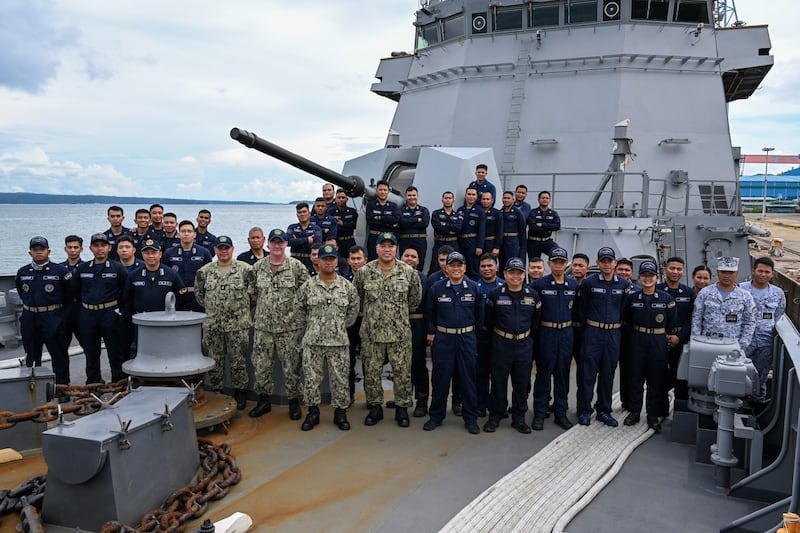A six-nation naval exercise led by the United States and the Philippines has begun in the waters off northern Philippines, the second such drills in 10 days, amid rising tensions with China.
Exercise Sama Sama, or Togetherness in the Tagalog language, kicked off on Monday, "marking the beginning of two weeks of maritime engagements designed to enhance interoperability and strengthen security ties among regional partners," the U.S. Navy said in a statement.
The exercise, involving almost 1,000 naval personnel from Australia, Canada, France, Japan, the U.S. and the Philippines, takes place in the northern Luzon area facing Taiwan. The United Kingdom has sent observers to the drills.
Just days before, on Sept. 28, four of the partners – Australia, Japan, the Philippines and the U.S. – together with New Zealand, conducted a maritime exercise within the Philippines’ exclusive economic zone, or EEZ, in the South China Sea.

On the same day, China announced its own air and naval drills around Scarborough Shoal, which it gained de facto control of following a standoff with the Philippines in 2012.
China's Southern Theater Command criticized the earlier exercise as destabilizing outside interference.
"Some countries outside the region have disrupted the South China Sea and created regional instability," the Chinese military said.
RELATED STORIES
[ China holds drills at disputed Scarborough ShoalOpens in new window ]
[ Philippines, US launch yearly large-scale military exercisesOpens in new window ]
[ China stages naval drills during Philippines-US exerciseOpens in new window ]
The command pledged to "resolutely defend China's sovereignty, security, and maritime rights and interests" in the South China Sea.
Beijing, which has just observed a lengthy national holiday, has yet to respond to Sama Sama 2024.
‘Not targeted at any country’
The U.S and the Philippines are treaty allies and they conduct various joint military drills every year.
The U.S. Navy said in its statement that Sama Sama, now in its eighth iteration, “reflects the spirit of the decades-long partnership between allies in the region.”
“What began as a bilateral event between the United States and the Philippines has grown into a multilateral and multiplatform operation,” it said.
“Working alongside naval vessels and maritime surveillance aircraft, specialized teams, including diving and explosive ordnance disposal units, will conduct high-intensity drills focusing on anti-submarine warfare, anti-surface warfare, anti-air warfare, and maritime domain awareness.”
The U.S. head of delegation, Rear Adm. Todd Cimicata, told reporters before the launching of the exercise that it was not targeted at any country.
"The intent of these exercises is not to ruffle feathers. It's tailored for interoperability," Cimicata was quoted by the Reuters news agency as saying. "Across the gamut, there are people that don't follow those rules so we have to agree so that we can set those standards."
China, which claims sovereignty over most of the South China Sea, has been in a tense standoff with the Philippines over some reefs inside Manila’s EEZ.
Last week, Chinese law enforcement personnel were accused of beating and injuring 10 Vietnamese fishermen near the Paracel archipelago in what Philippine National Security Adviser Eduardo Ano described as an "alarming act with no place in international relations."
Navy spokesperson, Rear Adm. Roy Vincent Trinidad, told a press briefing on Tuesday that Philippine authorities “have contingency plans in place” in case similar incidents happen to Filipino fishermen.
Trinidad urged fishermen to continue fishing in the West Philippine Sea, or the part of the South China Sea within the country’s EEZ.
The Philippine Navy said it had spotted a total of 190 Chinese vessels, including 37 naval and coast guard vessels, in Philippine waters this week, a slight increase from 178 the week before.
Jason Gutierrez in Manila contributed to this report.
Edited by Mike Firn.
